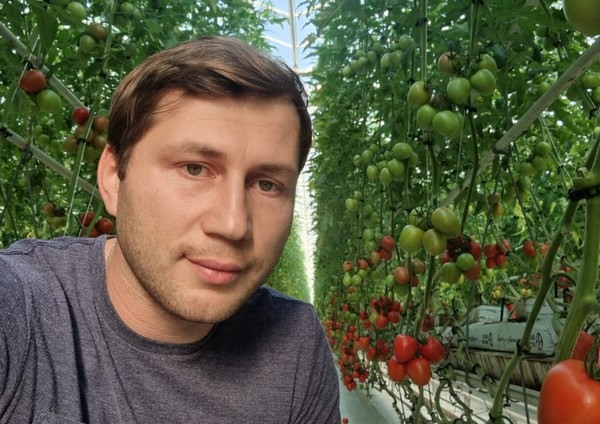Abuladze was one of a 10-strong group of dynamic growers of high wire crops who united at the GreenTech trade fair in Amsterdam, the Netherlands, last June (2022) for Plant Empowerment’s Summer School. Throughout this intensive five-day masterclass, Abuladze and his fellow delegates attended lectures by the Plant Empowerment implementation partners, drew inspiration from the displays and stands at the GreenTech and Floriade trade shows, and visited several pioneering growers.
Recalling how he first heard about the Summer School, Abuladze says: “We are using high-pressure sodium lights from Plant Empowerment implementation partner, Hortilux. They informed me that Plant Empowerment was organizing a Summer School. Our CEO and I decided that it would be an interesting event to attend – an opportunity to gain some good knowledge and new information that we could use. And this proved to be true.”

New insights into using climate screens
Abuladze reveals that one of the insights he gained during the action-packed masterclass was how best to utilize climate screens in the glasshouse. He reveals that the JSC Greenhouse Corporation, which is based in Eastern Europe in the city of Gardabani in the south of Georgia, boasts some ten hectares of modern greenhouses in which 18 hybrids of different-colored mini-plum, plum, cocktail, and beef tomatoes are produced. Cucumbers, and a small number of peppers, are also grown on the site.
Six of these ten hectares are plastic greenhouses, while the remaining four hectares (five including the nursery) are glasshouses in which climate screens are used “very actively,” explains Abuladze – who admits that “after those Summer School lectures, we are using them even more.”
Energy saving
“I was already involved with Plant Empowerment because we had a very knowledgeable Plant Empowerment consultant, Mark van der Werf, visiting our greenhouse several times a year. He would teach us Plant Empowerment techniques, and we would apply them. But prior to attending the Summer School, we would have screen gaps during the night, which we have now eliminated.”
“We now ventilate above the screens, and that helps us to get rid of extra humidity. And thanks to the screens being fully closed, we are not losing as much heat. So actually, we are saving energy. We used to deploy more heating through the pipes to get rid of the humidity. But now, because we have fully-closed screens, we don’t use the pipes as much.”
Knowledge sharing
Learning helpful growing techniques and sharing knowledge with other growers was a really good part of the Summer School, notes Abuladze. “I met growers from all over the world – from the US, Canada, Greece, and The Netherlands, for example. We talked about growing all the time and shared many ideas with one another. We found that we had a lot of similar problems and lots of different problems as well. We agreed that, at this point in Europe, energy is the biggest problem – which is why it has been advantageous to reduce our reliance on pipes.”
The grower adds that visiting some of The Netherlands’ historical sites with the other delegates was really interesting.
For more information:
Plant Empowerment
www.plantempowerment.com
